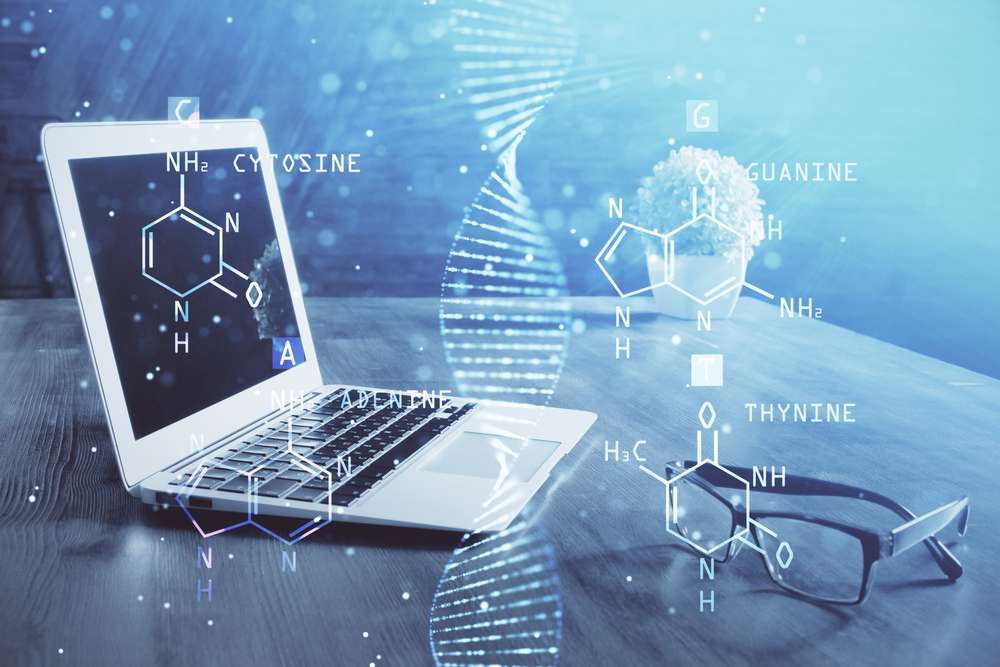DNA Computing: The Marriage of Biology and Digital Processing
Beyond silicon chips and quantum processors, a revolutionary computing paradigm is quietly developing in research labs worldwide. DNA computing harnesses the biological building blocks of life to perform calculations, potentially offering unprecedented computational density and energy efficiency. As traditional silicon-based computing approaches physical limitations, this biological alternative promises to redefine what's possible in data storage, processing, and problem-solving.

The Biological Blueprint of Computation
The concept of DNA computing first emerged in 1994 when Leonard Adleman, a computer scientist at the University of Southern California, demonstrated that DNA molecules could solve complex mathematical problems. Adleman used DNA to solve a version of the “traveling salesman problem” – finding the shortest path between multiple cities – establishing that biological molecules could perform computational tasks.
What makes DNA computing revolutionary is its remarkable information density. A single gram of DNA can theoretically store 215 petabytes of data, dwarfing conventional storage media by orders of magnitude. The molecule’s natural structure allows for massive parallelism, with trillions of molecules performing calculations simultaneously rather than the sequential processing of traditional computers.
Unlike silicon-based computing that relies on binary code (0s and 1s), DNA computing leverages the four nucleotide bases – adenine, thymine, guanine, and cytosine – creating a quaternary system. This expanded alphabet potentially allows for more complex information encoding in smaller spaces, fundamentally changing how computation can be structured.
From Laboratory Curiosity to Computational Powerhouse
Recent advances have transformed DNA computing from theoretical curiosity to practical application. In 2019, researchers at the University of Washington developed a DNA-based circuit that could perform basic arithmetic, while teams at Microsoft Research have been exploring DNA as a storage medium, successfully storing and retrieving gigabytes of information.
The potential applications extend far beyond simple calculations. DNA computers could revolutionize medical diagnostics by creating molecular machines that detect disease markers and trigger targeted drug delivery within the body. In cryptography, the massive parallelism of DNA computing could efficiently tackle problems that remain impractical for conventional computers to solve.
Perhaps most promising is DNA computing’s energy efficiency. While today’s supercomputers consume megawatts of electricity and generate significant heat, DNA-based systems operate at room temperature with minimal energy requirements. A DNA computer could theoretically perform billions of operations per second while consuming just a few watts – addressing one of computing’s most pressing sustainability challenges.
Technical Hurdles and Implementation Challenges
Despite its promise, DNA computing faces significant obstacles before widespread adoption. Current methods for reading and writing DNA sequences remain slow and expensive compared to electronic data processing. A typical DNA computation might take hours or days to complete a task that electronic computers handle in seconds.
Error rates present another challenge. While digital computers have sophisticated error correction mechanisms, biological systems are inherently more prone to mistakes during replication and processing. Researchers are exploring various error correction codes specially designed for DNA computation, but achieving reliability comparable to silicon-based systems remains elusive.
There’s also the matter of interfacing DNA computers with existing technology. Most DNA computing systems currently require extensive human intervention and laboratory equipment to function. Creating automated, self-contained systems that can communicate with conventional electronic devices represents a significant engineering challenge.
Price considerations remain prohibitive for many applications. Current DNA synthesis costs approximately $0.001 per nucleotide, making large-scale computations financially impractical. However, synthesis costs have dropped roughly a hundredfold over the past decade, suggesting that economic barriers may eventually diminish.
The Computational Ecosystem of Tomorrow
Industry analysts project that DNA computing won’t replace traditional electronic systems but will instead complement them in a hybrid computational ecosystem. This partnership would leverage the strengths of each approach – electronic computers handling time-sensitive tasks while DNA systems tackle data-intensive problems requiring massive parallelism.
Several major technology companies have invested in DNA computing research. Microsoft’s partnership with the University of Washington has yielded promising results in DNA data storage, while Catalog, a startup that raised $35 million in funding, has developed a machine that can write data into DNA at unprecedented speeds.
The potential market impact could be transformative. By 2030, experts estimate the DNA computing market could reach $2-3 billion, primarily in specialized applications like pharmaceutical development, climate modeling, and cryptographic security. As costs decrease and techniques improve, broader applications in consumer technology might emerge in subsequent decades.
The Ethical Dimension
As with any emerging technology, DNA computing raises important ethical questions. The increasing ability to manipulate and program biological materials blurs traditional boundaries between living and non-living systems. Researchers and policymakers are already considering frameworks to guide responsible development.
Security concerns also loom large. A computing paradigm based on biological materials could potentially introduce novel vulnerabilities and attack vectors. Researchers are exploring approaches to DNA cybersecurity, developing protocols to prevent unauthorized access or manipulation of biological computing systems.
Despite these challenges, DNA computing represents one of the most fascinating frontiers in computational science. By borrowing nature’s information processing machinery, we may soon unlock computational capabilities that silicon could never achieve – writing the next chapter in our technological evolution with the same molecules that write the code of life itself.





